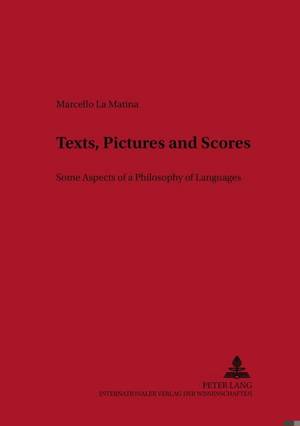
- Afhalen na 1 uur in een winkel met voorraad
- Gratis thuislevering in België vanaf € 30
- Ruim aanbod met 7 miljoen producten
- Afhalen na 1 uur in een winkel met voorraad
- Gratis thuislevering in België vanaf € 30
- Ruim aanbod met 7 miljoen producten
Zoeken
€ 75,95
+ 151 punten
Omschrijving
In many fields of today's scientific research there are scholars who deal with symbolic systems such as painting, music or verbal languages. No matter what the main content of every single discipline may be, the real challenge is to build up something like a general theory for languages. It is in this context that we may place the studies of some important philosophers such as János S. Petöfi and Nelson Goodman or - in another respect - Willard Orman Quine and Donald Davidson, who are taken into consideration by the author of this work. The book is organized by using an original mix of theoretical starting points (about the destinies of philology, translation, the theory of notation) and of practical text-analyses (of Greek music and of popular religious painting). The result of such a path is the outline of a new theory of sign and communication called 'editor theory'.
Specificaties
Betrokkenen
- Auteur(s):
- Uitgeverij:
Inhoud
- Aantal bladzijden:
- 296
- Taal:
- Engels
- Reeks:
- Reeksnummer:
- nr. 14
Eigenschappen
- Productcode (EAN):
- 9783631390764
- Verschijningsdatum:
- 20/06/2002
- Uitvoering:
- Paperback
- Formaat:
- Trade paperback (VS)
- Afmetingen:
- 148 mm x 210 mm
- Gewicht:
- 399 g

Alleen bij Standaard Boekhandel
+ 151 punten op je klantenkaart van Standaard Boekhandel
Beoordelingen
We publiceren alleen reviews die voldoen aan de voorwaarden voor reviews. Bekijk onze voorwaarden voor reviews.











